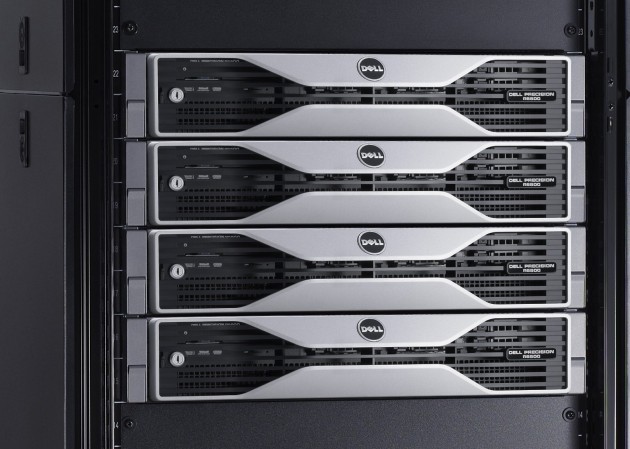Rack workstations. A fabulous remote-client solution that solves the problem of your co-workers ‘accidentally’ kicking the power button on your rig after 6.5 hours of unsaved work. That and avoiding the back-strain of moving workstations around make them ideal. But, before we get to all the glorious things that rack workstations are, it should be noted… Dell is entering the rack-mounted workstation space, not for the first time, but with the first multi-user rack workstation. The Dell Precision R5500. This, just a few weeks after they released an all new (long-overdue) line of Precision Workstations. What makes the multi-user rack different?
Dell’s Multi-User Rack Workstation
Dell entered the Rackstation market in 2008 introducing the Precision R5400 to compete against HP’s BladeSystem technology. Four years later Dell now has the R5500 and with it the ability to serve out GPU power to four concurrent users virtualized through Citrix XenServer. The R5500 starts at US $2742 (3 options avaialble). With these configurations you can get:
- Up to four NVIDIA Quadro® 2000 mid-range graphics cards
- Up to five full-height and full-length PCIe slots
- Up to 192GB of DDR3 memory
- Up to six 1TB SAS drives
With all of that loaded in, you’re looking at a hefty price. However, to put this into bare-minimum perspective, you can have four users on 4GB of RAM, a 500GB Hard drive and a 256MB Quadro card for the base price of $2742. Now, this excludes $1000 for Citrix XenServer on a single server and your monitor cost ($2200 for 4 Dell Ultrasharp 24″ monitors) if you don’t have them already. So, to get into virtualized rack computing for four guys, you’re looking at US $5,942 minumum. Single workstations can cost that amount and more depending on the hardware, but even selecting some of the higher options on the rack server you’re coming in comparable to a higher end workstation.
The rack is created specifically for 3D professionals, but I have yet to see if the virtualized environment proves itself over a single rack server. I’ve not been impressed with virtualized environments in the past. Optimally, with a rack server that can support four users, you’re saving space, energy consumption and maintenance. Not to mention saving extended pain and cost of hardware upgrades, software deployment and the complaints of IT staff dealing with the infrastructure on more workstations.







